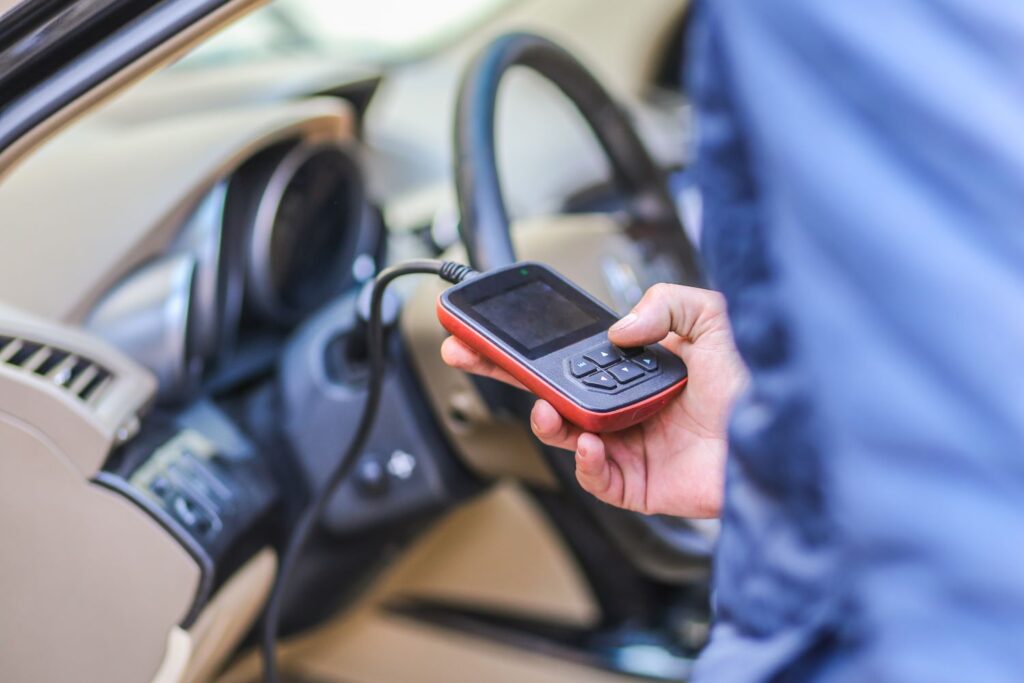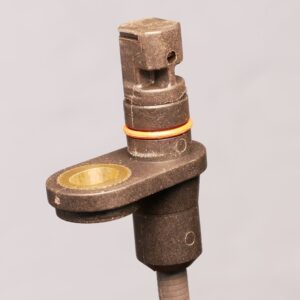Have you ever wondered how your vehicle’s brakes work? How does simply stepping on the brake pedal slow down and stop your vehicle even though it’s a lot heavier than you? This is possible thanks to the brake booster sensor, a crucial part of your vehicle’s brake system.
The brake booster sensor helps you step on the brake pedal with ease by monitoring the amount of vacuum pressure present in your brake system. It makes sure your brake booster has enough pressure to help you stop your vehicle whenever necessary.
If it stops working, you’ll be at greater risk of getting into an accident. For your safety, it’s important to know the signs of a bad brake booster sensor.

What Are the Symptoms of Brake Booster Sensor Failure?
There are a few signs of brake booster sensor failure you can watch for, including the following:
Illuminated Check Engine Light
A broken brake booster sensor can cause your Check Engine Light to turn on. However, because various issues can trigger your Check Engine Light, it would be best to use a scan tool just to be sure.
Use an On-Board Diagnostics (OBD) scanner and check if any of the following codes register:
- P0555 – Brake Booster Pressure Sensor Circuit
- P0556 – Brake Booster Pressure Sensor Circuit Range
- P0557 – Brake Booster Pressure Sensor Circuit Low
- P0558 – Brake Booster Pressure Sensor Circuit High
- P0559 – Brake Booster Pressure Sensor Circuit Intermittent
If your OBD scanner registers any of these codes, then your booster sensor is likely causing your lit check engine light.

Stiff Brake Pedal
If there is greater resistance than usual when you step on your brake pedal, then it might be because of a faulty brake booster sensor.
A faulty sensor won’t be able to monitor the vacuum in your brake system. If the vacuum is not enough, your brake booster could fail, leaving you with a brake pedal that’s hard to step on.
Keep in mind that a stiff brake pedal can also be caused by a faulty brake booster and a broken vacuum pump, so be sure to thoroughly diagnose your vehicle before replacing the sensor.
Longer Stopping Distance
If your vehicle becomes hard to stop, then it might be because of a bad brake booster sensor. A working sensor makes sure your brake booster provides enough force to help you stop your vehicle as soon as you step on the brake pedal.
A malfunctioning brake booster sensor will fail to measure the vacuum levels in your brake system. This will make it hard for your vehicle to stop as quickly as before, increasing your stopping distance.
What Is a Brake Booster Pressure Sensor?
Most modern vehicles come with a brake booster that helps the driver press down on the brakes with ease. This brake booster won’t work without the help of the brake booster vacuum sensor. The brake booster sensor measures the pressure in the vacuum booster, making sure there’s enough pressure for the booster to function properly.
You can typically only find brake booster sensors on very modern or luxury vehicles that come with vacuum pumps. This means most older vehicles that don’t have a brake booster sensor don’t have a vacuum pump either, with their engine acting as the vacuum pump instead.
Brake booster vacuum sensors are usually only found on very modern vehicles or luxury vehicles. Also, a lot of the vehicles that have brake booster pressure sensors have vacuum pumps. The older vehicles with no sensors do not have vacuum pumps. The engine is the vacuum pump instead.
–Anthony Harlin, ASE Certified Master Automobile Technician

What Does a Brake Booster Sensor Do?
Whenever you step on the brake pedal, your vehicle’s brake booster sensor measures the amount of pressure released by your brake booster to help you stop your vehicle. It then sends this data to your engine control unit (ECU), which determines if the pressure is enough for your brakes to function properly.
There are two main types of brake boost sensors: pedal travel sensors and pedal force sensors. The type of sensor your vehicle has will depend on your vehicle’s make and model. If you aren’t sure which type your vehicle has, you can check your owner’s manual for more information.
Other Brake Booster Sensor FAQ
The brake booster pressure sensor’s location will vary depending on your vehicle’s make and model, but you can usually find it attached to the brake booster. You can find your brake booster inside the engine compartment, between your brake pedal and master cylinder. In some vehicles, you’ll find the vacuum sensor in the vacuum line connecting the brake booster to the vacuum pump.
Your brake booster vacuum sensor should last as long as your vehicle. In some cases, however, the sensor can wear out and suddenly stop working. Vacuum leaks and manufacturing defects can also cause the sensor to fail.
While you can still drive your vehicle with a faulty brake booster sensor, it isn’t a good idea to do so. A broken vacuum sensor will affect your vehicle’s braking system, making it hard to stop your vehicle when you need to. This can be dangerous, even if you aren’t driving in heavy traffic. For your own safety, avoid driving your vehicle until you fix your broken sensor.
Power brake booster sensors can cost you anywhere from $40 to $100. The final price will vary depending on several factors, including your vehicle’s make, model, and the product’s brand.
Any information provided on this Website is for informational purposes only and is not intended to replace consultation with a professional mechanic. The accuracy and timeliness of the information may change from the time of publication.






























